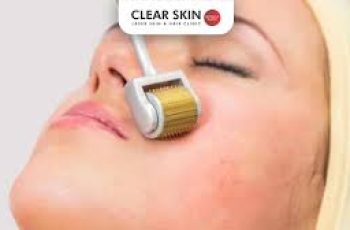
Red Face When Exercising – Normal or Not?
If you experience a bright red face after exercising, you’re certainly not alone. Many people notice their faces become flushed or blotchy after a workout. But is this a normal reaction to physical activity, or could it be a sign of something more serious, such as rosacea, high blood pressure, or another medical condition? In this article, we’ll delve into the causes of facial redness during exercise, how to prevent it, and what you can do to manage it if it becomes a problem.
What Causes a Red Face When You Exercise?
When you exercise, your body’s blood flow increases in an effort to keep your muscles fueled and your body cool. As a result, blood rushes to the surface of your skin, which is why your face may turn red, pink, or blotchy. This is a completely normal and natural physiological response known as “flushing.”
Flushing occurs because your body is trying to cool itself down. As you work out, your body temperature rises, and your circulatory system responds by increasing blood flow to the skin’s surface. This allows heat to escape more efficiently. For most people, this redness fades quickly once exercise is over.
However, in some cases, particularly for individuals with very light skin, the redness can be more intense and last longer, sometimes lingering for more than an hour after the workout.
Why Do I Get Red, Blotchy Skin After Exercise?
The blotchiness or redness that you see is mainly due to the increased blood flow to your skin. It’s a natural mechanism designed to help regulate your body’s temperature.
However, if your face remains red or blotchy for an extended period after exercise, it could potentially be a sign of something else, such as rosacea. Rosacea is a chronic skin condition that causes persistent redness and visible blood vessels, often on the face, which can be triggered by physical exertion.
While rosacea may not always be the cause of facial redness post-workout, it is worth considering if the redness is persistent or severe. Other causes of facial redness include high blood pressure, allergic reactions, or the use of certain skincare products that may irritate the skin during physical activity.
Is My Red Face After Exercising Rosacea?
Rosacea is a skin condition that often goes undiagnosed and can cause redness on the face, particularly on the nose, cheeks, and chin. The condition can be exacerbated by triggers such as heat, exercise, spicy foods, and alcohol. If you find that your redness is more intense or lingers for a long time, you may want to consider whether rosacea is the cause.
Other signs of rosacea include:
Visible blood vessels on the skin
Acne-like bumps or pustules
Skin that feels warm or tender
Dryness or irritation on the skin
If you suspect you might have rosacea, it is recommended to consult a dermatologist for a professional diagnosis and treatment plan. Even if you don’t have rosacea, using medications like oxymetazoline (which helps reduce the dilation of blood vessels) may help manage your facial redness during exercise.
How to Prevent a Red Face When Working Out
If you’re someone who regularly experiences facial redness during exercise, especially when working out outdoors in hot or sunny conditions, here are some tips to help minimize the redness:
Avoid Chemical Sunscreens: Some chemical sunscreens can cause skin rashes or photoallergic reactions when exposed to sunlight. To avoid this, opt for physical sunscreens that contain zinc oxide or titanium dioxide.
Stay Hydrated and Cool: Keep a metal water bottle with ice and cold water during your workout. The cold metal surface can be used to gently roll on your face, helping to cool your skin and reduce redness.
Medications: Talk to your doctor about medications like Rhofade, which helps shrink blood vessels on the face, preventing excessive redness. You’ll need to apply it 2 to 4 hours before exercising for the best results.
Anti-Inflammatory Diet: Eating anti-inflammatory foods, such as fruits, vegetables, and fatty fish like salmon or flaxseed oil, can help maintain healthy skin and reduce redness. These foods help stabilize the microbiome, which plays a role in rosacea and overall skin health.
Gentle Skincare Products: Using detergents such as Tide Free for your workout towels and avoiding face wipes or alcohol pads can help prevent irritation. Stick to skincare routines that are suitable for sensitive skin types.
Avoid Exfoliating Ingredients: Refrain from using harsh exfoliants like hydroxy acids before exercising, as these can make your skin more sensitive to redness and irritation.
Custom Skincare: Understand your skin type (such as by taking the Baumann Skin Type quiz) to ensure you’re using the right products that don’t exacerbate redness during exercise.
What Chemicals in Sunscreen Should I Avoid to Prevent a Red Face During Outdoor Exercise?
Some ingredients in sunscreens can cause irritation or contribute to redness in certain people. To avoid triggering facial redness, steer clear of the following chemicals commonly found in chemical sunscreens:
Avobenzone (Parsol)
Benzophenone
Butylmethoxydibenzoylmethane
Dibenzyl
Octocrylene
Oxybenzone
Choosing a mineral sunscreen with zinc oxide or titanium dioxide may be a better option for preventing irritation during outdoor workouts.
How to Get Rid of a Red Face After Exercising
If your face turns red after exercising, there are a few things you can do to help reduce redness:
Use Rhofade: If you have rosacea, the prescription medication Rhofade can help constrict the blood vessels in your face and reduce redness. Apply it 2 to 4 hours before exercising for the best results. If used regularly, it can help prevent facial redness during and after exercise.
Cool Your Skin: After exercise, gently splash your face with cool water or use a cold compress to help reduce inflammation and calm redness.
Anti-Inflammatory Skincare: Incorporate products with anti-inflammatory ingredients such as niacinamide, which can help reduce redness and improve skin’s overall appearance.
Gentle Skin Care Routine: Make sure your skincare routine includes products tailored for sensitive skin, especially if you experience frequent redness. Avoid using harsh chemicals or exfoliants before exercise.
What Can Cause a Red Face Besides Exercise?
Besides exercise, several other factors can cause or worsen facial redness:
Detergents in Towels: Some laundry detergents can leave residues on towels that irritate the skin.
Caffeine: Stimulants like caffeine or energy drinks (such as Red Bull) can increase circulation and cause redness.
Emotional Stress: Stress and anxiety can trigger a flushed appearance.
Hormones: Hormonal changes, especially in women, can cause fluctuations in skin sensitivity and redness.
Heat: High temperatures can lead to flushing, whether from exercise or simply being in a hot environment.
Rosacea: As mentioned earlier, rosacea is a common cause of persistent redness, and exercise can be one of its triggers.
Wrong Skin Care Products: Using products that aren’t suited to your skin type or that contain irritants can contribute to redness.
Conclusion
Facial redness during and after exercise is usually a normal response as your body works to regulate temperature through increased blood flow to the skin. However, if the redness persists for a long time or is accompanied by other symptoms like irritation or visible blood vessels, it could indicate a condition like rosacea.
There are several ways to manage and reduce redness, from adjusting your sunscreen choices to incorporating soothing skincare routines. If redness is a persistent issue, consulting a dermatologist for personalized advice and potential treatments can be helpful.
By understanding what causes your red face and taking steps to prevent and manage it, you can enjoy your workouts without worrying about facial flushing.


